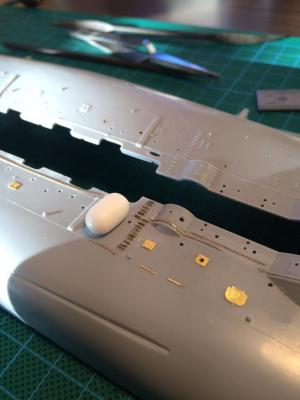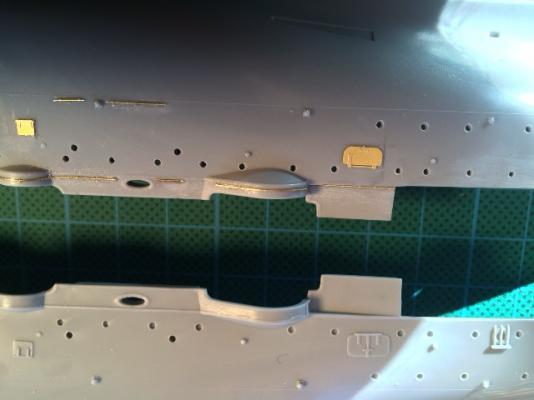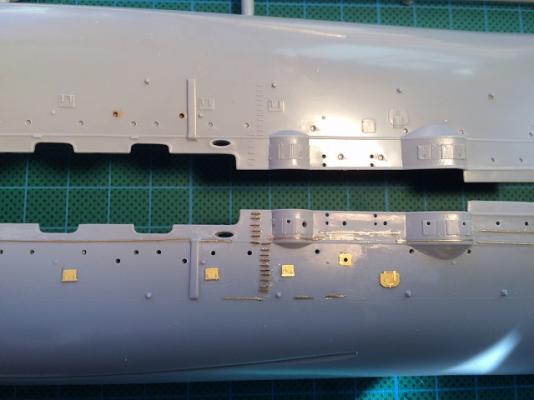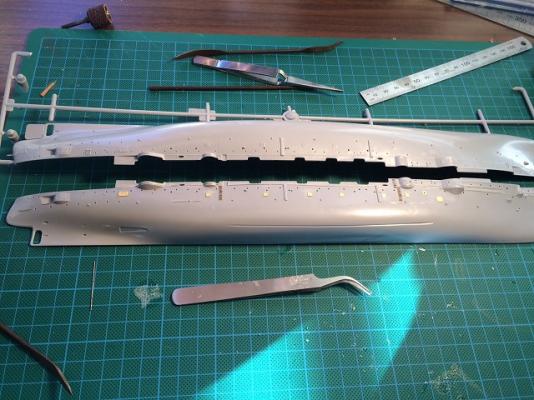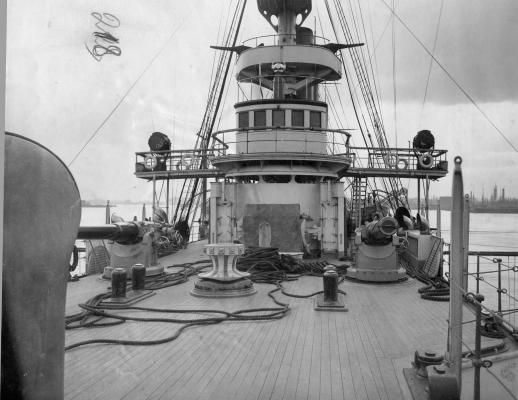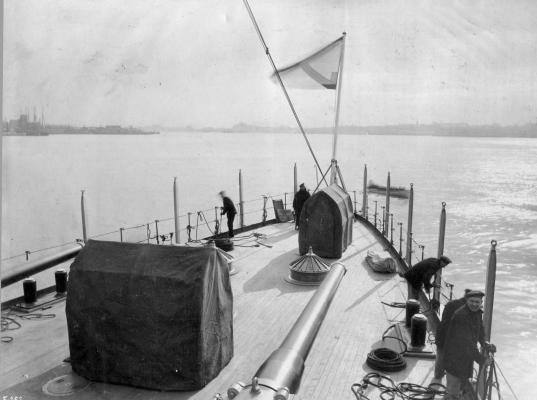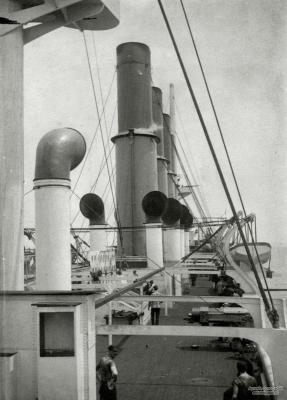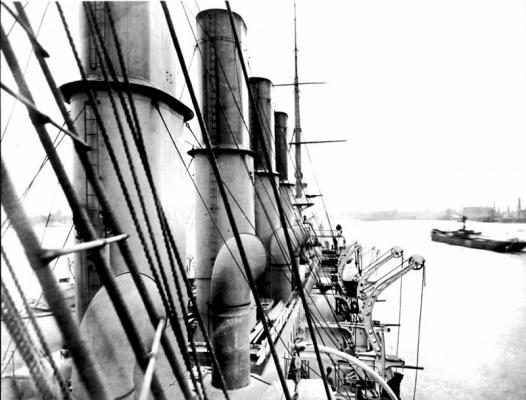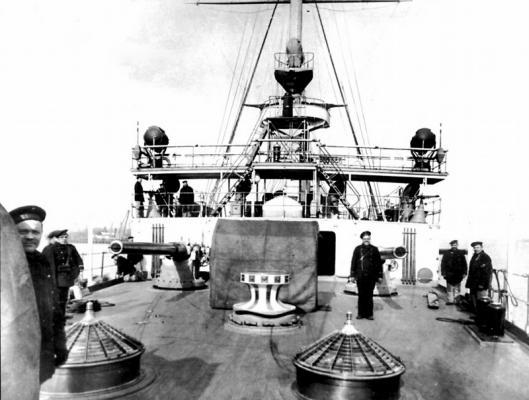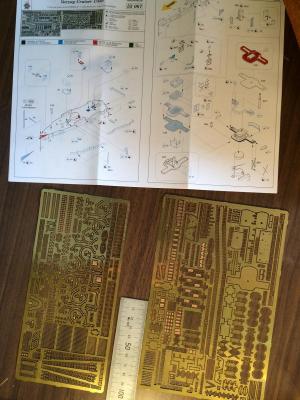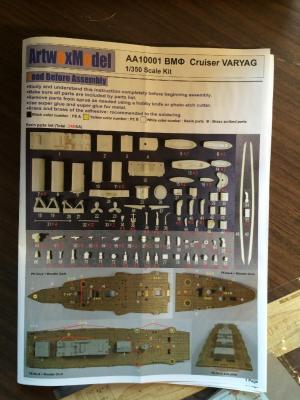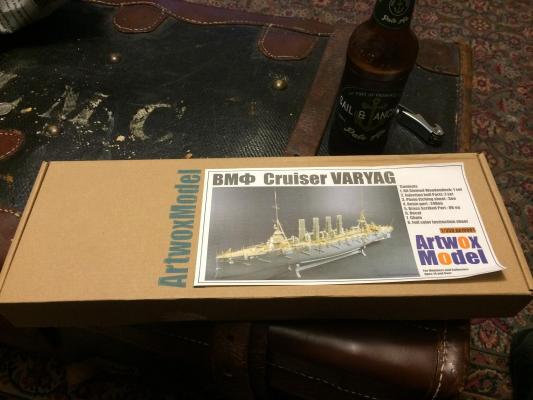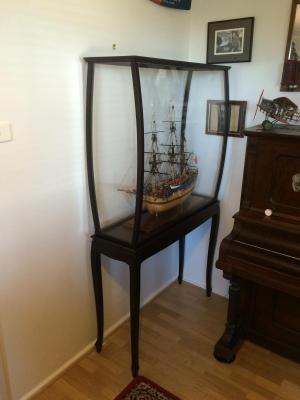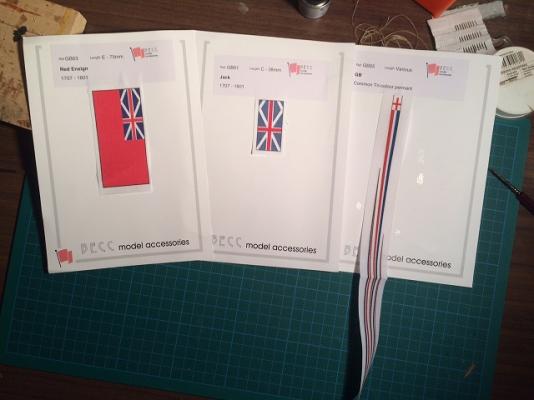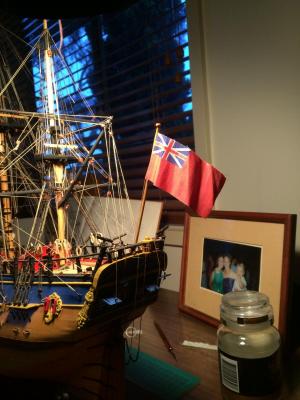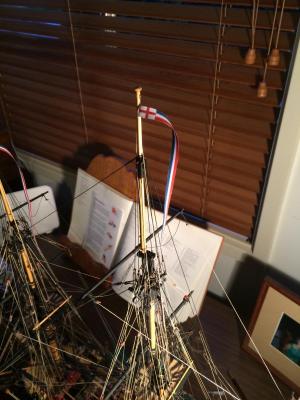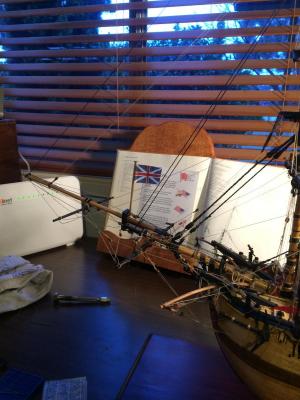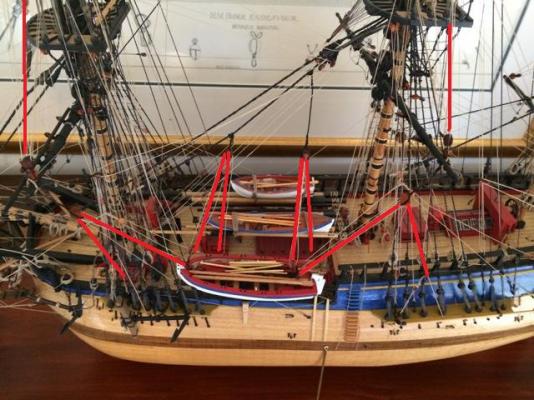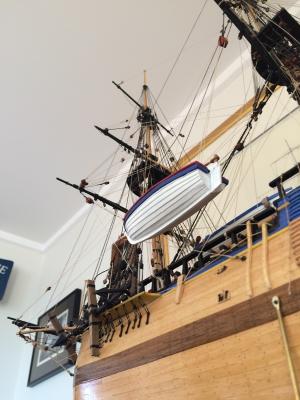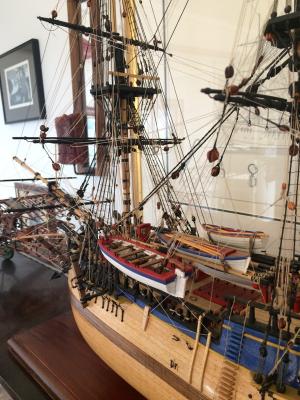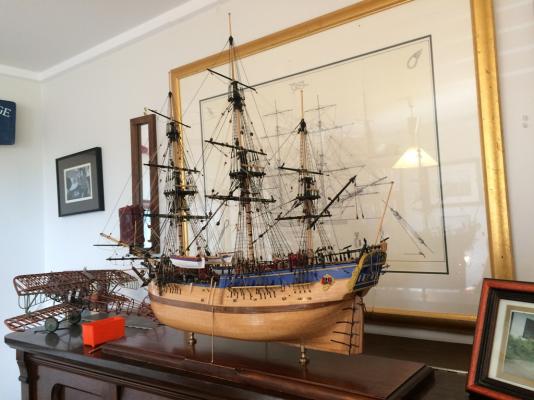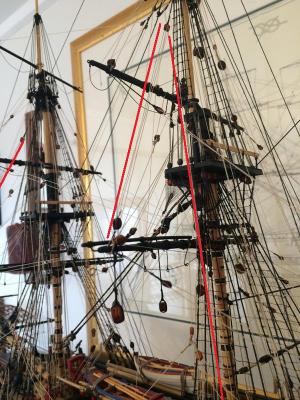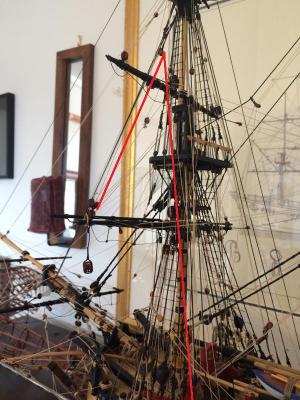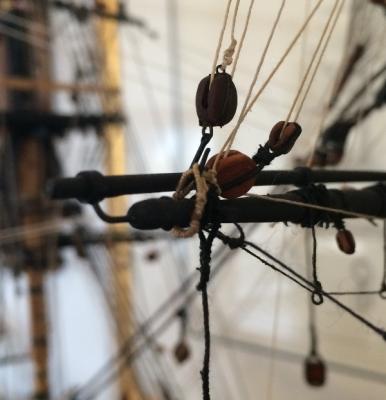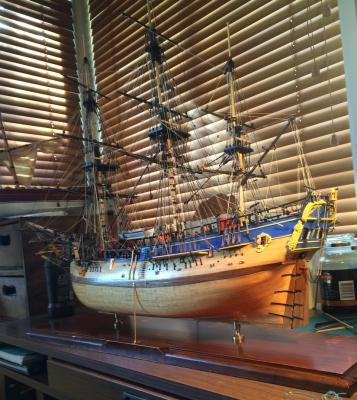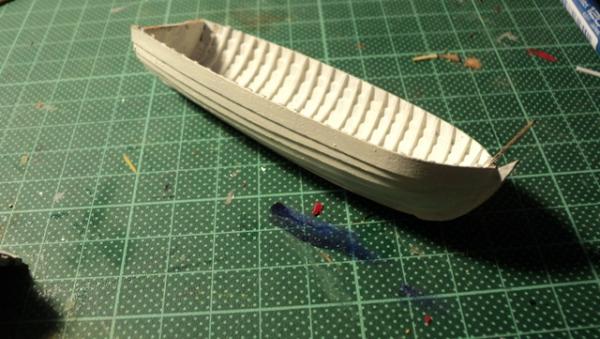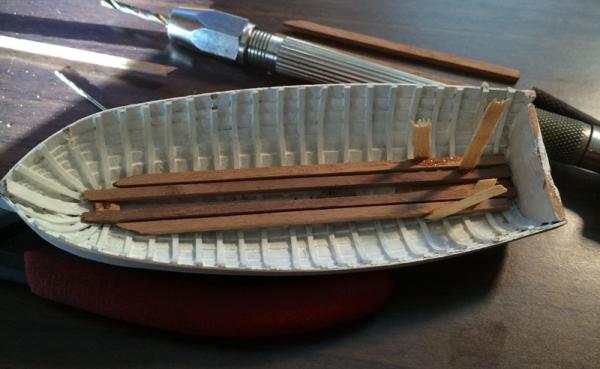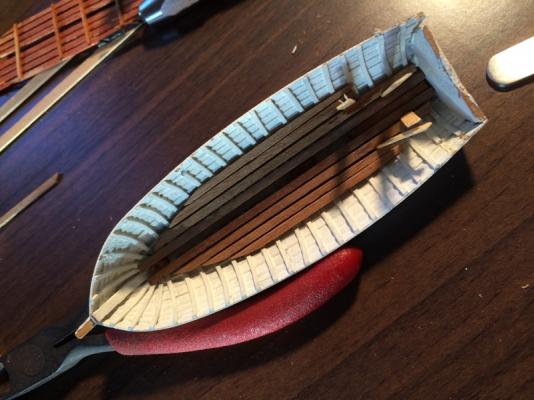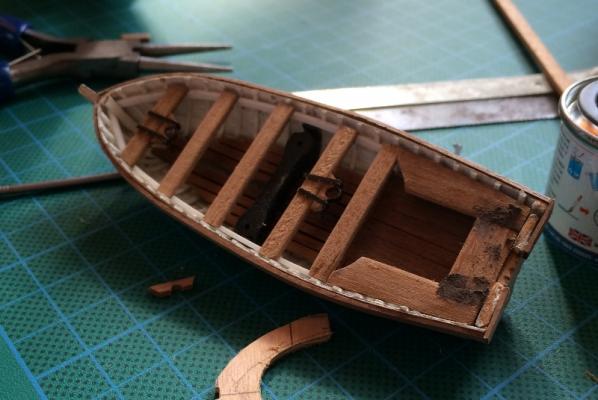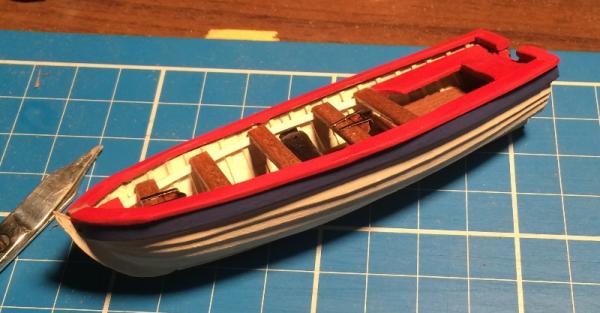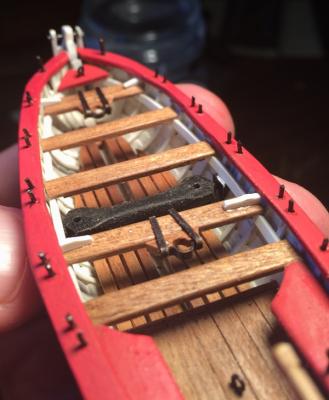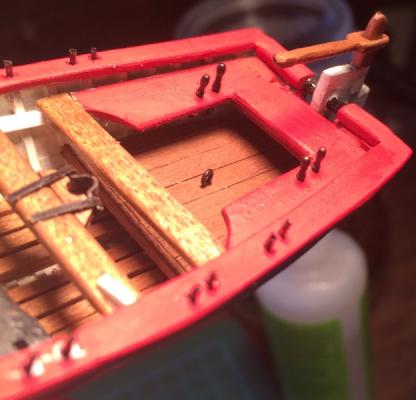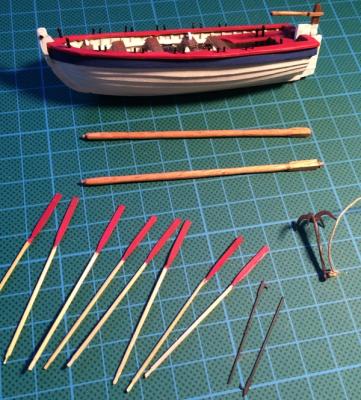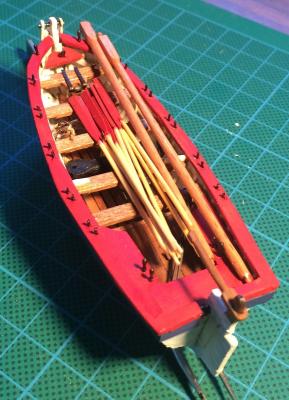-
Posts
5,531 -
Joined
-
Last visited
Content Type
Profiles
Forums
Gallery
Events
Everything posted by RGL
-
A quick update, I ordered and received the Varyag nameplate fret from Northstar models which includes the coat of arms and nameplate for the stern (Eduardo & Artwox have omitted both) as well as the ship's wheel and telegraph. The steps included in the Eduardo fret are nice but are 10 short, so the only place in the world that has them in stock are North Star (Latvia!) I love internet shopping but it will probably take a month to arrive which will cause me the re think my building plan. I'm really keen to figure out how to rig it and have ordered the Varyag book. Wooden ships really teach you to plan months if not years ahead when it comes to rigging as the belaying points are completely inaccessible once something is stuck on the hull so it has to be done before it is attached. Nice to have a new distraction. Wish it was in a bigger scale.
-

HMB Endeavour by mikec - Eaglemoss
RGL replied to mikec's topic in - Kit build logs for subjects built from 1751 - 1800
Just great work mate -
Ok, 2 days work on half a hull. I've used Dafi's scaling system of a Tic Tac as everyones coins are different. Drilled out the portholes and started on the photo etch. The Artwox fret has the hatches, the Eduard Fret has the footrails and the steps. I need to get some really fine grain sandpaper for a bit of tidy up from the CA. You can see at the bow how I've started to sand off the scrollwork as the Artwox kit leaves it as is but Eduard provide one. It's been such a long time since I've usd Photo etch I've forgotten how fiddley it is. The steps are microscopic, and whilst they look a little out of line, in the broad view it won't really matter.
-
The contents of the box; lots of resin, 2 sheets of photoetch, a false brass deck, a wooden deck, the hull, lots of little brass rods, and instructions. Also is the Eduard frets. As I progress I will compare the pair, but I have already noted that the wheelhouse for the Artwox kit is resin where the Eduard is photoetch, and Eduard includes the Bow decorations where as Artwox omits it. Eduard also does not included the hatches on the hull. Neither kit has a decent rendition of the rails on the hull. Artvox does not bother and it is only representative with Eduard. The steps on the hull are not included in the Artwox and the Eduard fret has them.
-
I needed a change of scenery after a 10 year build on my Endeavour. I couldn't face another long term challange. Months ago I found the Artwox Varyag on the net on an overseas site and liked it a lot, but shipping to Oz is usually a nightmare. I found the kit at BNA Models at a reasonable price and thought that itn would be a nice change as I have not done a plastic model this century. I suppose the advantage of a late 1800's early 1900's kit has the advantage of real photos. Also the aftermarket range of goodies for plastic kits is great, as plastic is a lot more unforgiving than wood. The Artwox kit only has the original Zvesda hull, with their own false deck, wooden deck, resin, photoetch and barrels. The instructions are fairly good but without other references I would be lost. After having done a tall ship model, I now know how important the rigging plans are (the kit has none) and I have orderd the Kagero book. There are some things missing from the Artwox photoetch fret which are included in the Eduard kit and vice versa, so I also got that.
-
A rigging plan would be nice too. I just bought the kit as well.
- 5 replies
-
- varyag
- protected cruiser
-
(and 2 more)
Tagged with:
-
Thanks folks, Just ordered the Artvox Varyag super kit for a change of pace.
- 319 replies
-
Job complete. Very little of the AL kit was used, and as I said to my 10 year old last night, I started this when you were a baby, it's now in this glass box and you can do whatever you want with it after I'm dead, as it's not going anywhere.
- 319 replies
-
- 319 replies
-
The last of the rigging. The ships longboat being brought in. Fiddly work. The flagstaff are attached and I am just awaiting the flags to arrive before she will be complete.
- 319 replies
-
The research I have done showed that the Fore and main yards were braced with tackle from the topgallants when lowering a boat or heavy load. There was a sling attached to the yard to take the hook.
- 319 replies
-
I have re varnished the base and attached the pedestals. I also use some brass rods to act as support struts to hopefully keep the ship from future cat tipping
- 319 replies
-
I'm in the process of varnishing the base, pedestals ready to go, I have bought a display case, flags ordered from the UK, just have to rig the final ships boat being lowered into the water. I reckon it'll be planted in my front hall in a fortnight where it will sit till I die or the bloody cat tips it over. The plan is a few OT shifts and then order the Bluejacket Atlantic which no one seems to have done, just don't tell the bride.
- 319 replies
-
Sigh, divorce is far too expensive. And I like the wife. I spend the whole day fixing the front end damage, restropping blocks and fixing a snapped bumpkin. Two dead lights to repair, sling a boat, whack it in a case and finished! Apart from losing the boom kind and jackstaff in the house move. It seriously never finishes.
- 319 replies
-

HMB Endeavour by mikec - Eaglemoss
RGL replied to mikec's topic in - Kit build logs for subjects built from 1751 - 1800
Love it, far sharper than mine. -
I reckon you're right, it doesn't make sense to have it where the AOTS says it goes, it was a bugger to rig and gets in the road.
-
The last of the ships boats. I scratch built the outside back in mid 2011 when I did the others, but as I am facing extensive cat damage again I thought I'd get i over and done with so I could do the rigging in one hit. I have run off the AOTS's longboat including Windlass and Cable Cleats.
- 319 replies
-
Well, I'm back. The Government bought my house (asbestos) , I bought a new one, moved everything. ANOTHER CAT attacked the Endeavour whilst it was being babysat. More repairs to go again. Nothing major but bloody annoying.
- 319 replies
-

HMB Endeavour by mikec - Eaglemoss
RGL replied to mikec's topic in - Kit build logs for subjects built from 1751 - 1800
Nice work mate
About us
Modelshipworld - Advancing Ship Modeling through Research
SSL Secured
Your security is important for us so this Website is SSL-Secured
NRG Mailing Address
Nautical Research Guild
237 South Lincoln Street
Westmont IL, 60559-1917
Model Ship World ® and the MSW logo are Registered Trademarks, and belong to the Nautical Research Guild (United States Patent and Trademark Office: No. 6,929,264 & No. 6,929,274, registered Dec. 20, 2022)
Helpful Links
About the NRG
If you enjoy building ship models that are historically accurate as well as beautiful, then The Nautical Research Guild (NRG) is just right for you.
The Guild is a non-profit educational organization whose mission is to “Advance Ship Modeling Through Research”. We provide support to our members in their efforts to raise the quality of their model ships.
The Nautical Research Guild has published our world-renowned quarterly magazine, The Nautical Research Journal, since 1955. The pages of the Journal are full of articles by accomplished ship modelers who show you how they create those exquisite details on their models, and by maritime historians who show you the correct details to build. The Journal is available in both print and digital editions. Go to the NRG web site (www.thenrg.org) to download a complimentary digital copy of the Journal. The NRG also publishes plan sets, books and compilations of back issues of the Journal and the former Ships in Scale and Model Ship Builder magazines.



